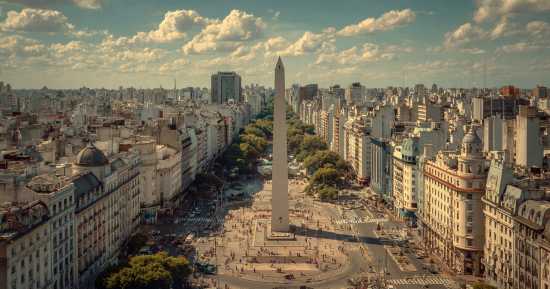
Beneath the peaks of the Andes and across the rolling Pampas, the Argentinian History Quiz reveals a culture built on passion, artistry, and connection. Argentina thrives through its traditions, where music and dance pulse in the streets, and shared meals unite families around the table. From bustling Buenos Aires to quiet mountain villages, every corner tells a story of craft, flavor, and resilience. Tango dancers fill plazas with energy, while artisans shape leather and textiles that reflect centuries of skill. Festivals bloom with color, bringing communities together in celebration of music, food, and heritage. Argentina’s past thrives not in monuments but in its people and their endless creativity.
Exploring Argentina is like tracing a living canvas painted with movement and sound. The rhythms of tango and folklore resonate through neighborhoods where history feels immediate and alive. Markets brim with fresh produce, regional dishes, and handmade goods, each stall a reflection of local pride. Patagonia’s sweeping landscapes inspire artists and storytellers, while the lively cafés of Buenos Aires provide endless conversations about art, literature, and tradition. Argentina’s cultural heartbeat comes from its communities, where old customs and new ideas blend seamlessly. This is a nation defined by creativity, not conflict, and by a spirit that celebrates every detail of life.
The Argentinian History Quiz invites you to experience a culture that lives boldly through its people, cuisine, music, and traditions. Rural festivals honor regional identity with dance, crafts, and shared meals that unite entire villages. Urban neighborhoods showcase modern design alongside timeless cafés filled with history and warmth. Each cultural thread weaves into a story that reflects both past and future. Argentina’s legacy is one of artistry, community, and celebration, carried proudly into every generation.
Argentina’s Cultural Landscape
The Pampas foster close-knit rural traditions, while bustling cities shine with energy and creativity. These contrasts give Argentina its extraordinary depth.Markets across the country offer handmade goods, from leatherwork to silver jewelry, that keep traditional skills alive. Every crafted piece is a testament to enduring heritage and local pride.The arts flourish in Argentina, where painters, musicians, and performers carry forward the nation’s cultural legacy. This vibrant mix of influences creates a society that is both rooted in history and alive with innovation.
Festivals and Traditions of Argentina
Argentina’s festivals fill the calendar with color and music. From the Carnival of Gualeguaychú to local folklore gatherings, every event brings joy to its communities.
Tango festivals in Buenos Aires celebrate the dance that symbolizes Argentina’s passion and elegance. These events attract dancers and musicians from across the globe.In the countryside, harvest festivals showcase food, crafts, and traditional music, keeping rural customs alive while welcoming visitors to join the celebration.
Music, Art, and Cuisine
Music is at the soul of Argentina, from the haunting sound of the bandoneón in tango to the lively beats of folk songs. Each note carries history and emotion.
Art thrives in vibrant murals, world-class museums, and small galleries that display local talent. Argentine artists use bold colors and striking themes to tell their stories. Cuisine brings another layer of richness. From the smoky flavor of asado to delicate pastries like medialunas, every dish celebrates tradition, family, and culture.
7 Fun Facts About Argentinian History Quiz
- Argentina is the birthplace of tango, a dance that blends music, movement, and storytelling.
- The country is home to the largest number of bookstores per capita in the world.
- Mate, a traditional herbal drink, is shared in social gatherings as a sign of friendship.
- Buenos Aires is known for its vibrant street art culture and colorful neighborhoods.
- The Pampas region is famous for its skilled cattle ranchers and rich agricultural heritage.
- Patagonia inspires artists and adventurers with its dramatic landscapes and vast wilderness.
- Argentina celebrates countless local festivals that honor regional food, music, and traditions.
7 Serious Facts About Argentinian History Quiz
- Argentina’s cultural identity reflects a blend of Indigenous, European, and local influences.
- The country is one of the world’s leading producers of wine, particularly in Mendoza.
- Traditional Argentine crafts include silverwork, leatherworking, and intricate textile weaving.
- Tango music and dance are UNESCO-recognized cultural treasures.
- Argentina’s diverse landscapes influence its regional cuisine and cultural traditions.
- The National Library in Buenos Aires holds one of South America’s largest literary collections.
- Argentina’s history of immigration has enriched its cultural diversity and artistic expression.
Argentinian History – FAQ
The May Revolution of 1810 marked a pivotal moment in Argentina’s history as it led to the establishment of a local government independent of Spanish rule. This event laid the foundation for the country’s eventual independence and is celebrated annually as a symbol of Argentine nationalism.
Juan Perón, a prominent political figure in Argentina, served as the country’s president multiple times and introduced a political ideology known as Peronism. His policies focused on social justice, workers’ rights, and economic nationalism, shaping the country’s political landscape for decades to come.
Eva Perón, also known as Evita, was a significant figure in Argentinian history, championing social welfare programs and advocating for women’s rights. Her influence extended beyond politics, making her a beloved figure among the working class and a symbol of compassion and empowerment.
